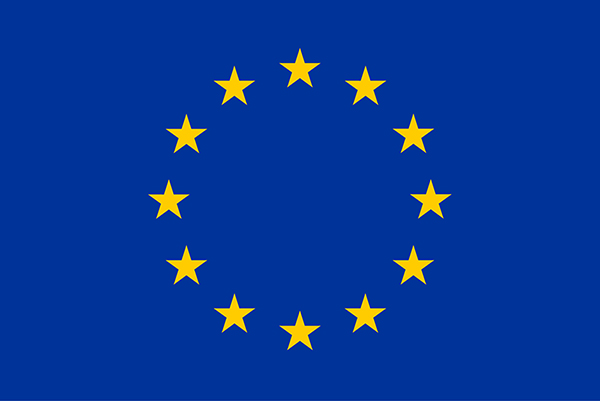Economic Development
Programme name: Economic Development (ED)
Programme time frame: October 2015 - October 2018
Direct beneficiaries: 8744 producers and their children (34976)
Indirect beneficiaries: 12210 producers and their children (48680)
ProgramME Overview
Economic development is essential to World Vision’s goal of sustained well-being of children. World Vision recognises that for children living in poverty, life in all its fullness begins with this sustained family well-being. Hence, when there is improvement in the conditions of economic justice along with positive change in parents’ incomes and assets, it paves the way toward enhanced household economic well-being.
World Vision works to incorporate and strengthen economic development initiatives as part of its integrated programming approach. These initiatives cover secure income, accumulation and diversification of assets, along with stronger and diverse livelihoods –build resilience in households, in the community and in the nation.
Programme goal
Producers have sustained increase in income and/or business profit that improves their ability to provide well-being for their children.
Economic Development Technical Programme seeks to meet health and education needs for children and families, addressing root causes identified as follows:
- Lack of enough household income,
- Difficulties in selling products and gaining profit from their work,
- Lack of market information, understanding and market literacy for relevant decisions,
- Difficulties in getting access to sustainable and profitable markets, develop relationships with new, potential buyers,
- Inability to develop relationships with service providers (such as training institutions) who can help them improve their product offering,
- Lack of capacity within communities to change or improve their production practices to better meet market demand,
- Orient the markets to adequately recognise the investment and value that is generated by smallholder farmers and producers.
In 2014, under the Economic Development programme, World Vision Armenia decided to strategically focus on Local Value Chain Development (LVCD) model, having an ultimate goal of increasing producers’ income. The LVCD model is designed to help producers create market systems which work better for them by increasing their understanding of market demand as well as increasing their bargaining power resulting in them gaining more profit from what they produce. Our staff supported smallholder producers to work collectively, to improve their productivity, develop better relationships with buyers and gain more profitable access to markets.
The LVCD model relies on
- Market Facilitator (MF): MF is responsible for facilitating market linkages and empowering producers,
- Producer Groups (PGs): Voluntary formation of groups based on interest of producers. Groups are trained and coached by Market Facilitator. Producer Group members participate in market information gathering and analysis. Producer Group members work together to collectively sell their products to buyers. They may also work together collectively to buy from input providers,
- Local Market Facilitators (LMFs): Local Market Facilitators are identified from within Producer Groups and are coached by the MF from early in the project. LMFs will learn from and replace the MF during the project,
- Partners: Partners play a facilitation role in the demonstration of new techniques, training of producers, connecting producers with buyers, building capacity of groups, etc.
Economic Development programme is implemented in Armenia’s 6 marzes (regions). Areas currently covered by WV Armenia ED programming are Amasia, Stepanavan, Alaverdi, Vardenis, Gavar, Tchambarak, Tavush, Noyemberyan, Sisian, Kapan, Talin, Aparan.
Starting from January 2018 World Vision implements "EU4Tourism: Community-driven rural tourism and cultural activities in Gegharkunik and Vayots Dzor marzes" 2 year project aimed to contribute to the promotion of tourism and culture in Gegharkunink and Vayots Dzor marzes with a view to enhancing economic development and reducing poverty in these target areas. The project is funded by European Union and implemented in Chambarak, Vahan, Ttujur, Getik, Martuni, Aygut, Dprabak, Kalavan, Dzoravanq, Antaramej in Gehgharkunik marz and Agarakadzor, Gnishik, Khndzorut, Nor Aznaberd and Vardahovit in Vayotz Dzor marz.
The project will generate greater economic benefits for the targeted communities and create at least 70 employment and self-employment opportunities for locals; it will also improve working conditions and access to the market of tourism; it will contribute, to the conservation of natural and cultural heritage and revitalization of the cultural life. The project strives to make the communities a better place to live and for tourists to visit.
Key Milestones for 2017
•Around USD$786,000 of additional profits were generated by all 12 projects during FY17 through Collective purchase and sale, holding prices within communities, utilization of new technologies, increase of product quality, new markets / opportunities, etc.
•63 Producers’ groups were established with 579 members over 70% of whom are female,
•143 capacity building events were organised on group management, organic, sustainable agriculture, marketing, financial management, as well as food processing for 1805 producers
•87 experience exchange visits, meeting with buyers and participation in expos were organised for 585 producers
•24 Local market facilitators from participant communities began representing their own communities, demonstrating the sustainability of the LVCD approach
•Connections/ networks with over 40 buyers and input suppliers
•Special loans products/ 4%-9% interest rate/ ensured though the partnership with Jinishian Memorial Foundation with over 250.000 USD portfolio for the project beneficiaries
•PGS were supported to receive 10 Grants with overall 87300 USD funding / ADA OASI, UNIDO/ENPARD, German Embassy/
